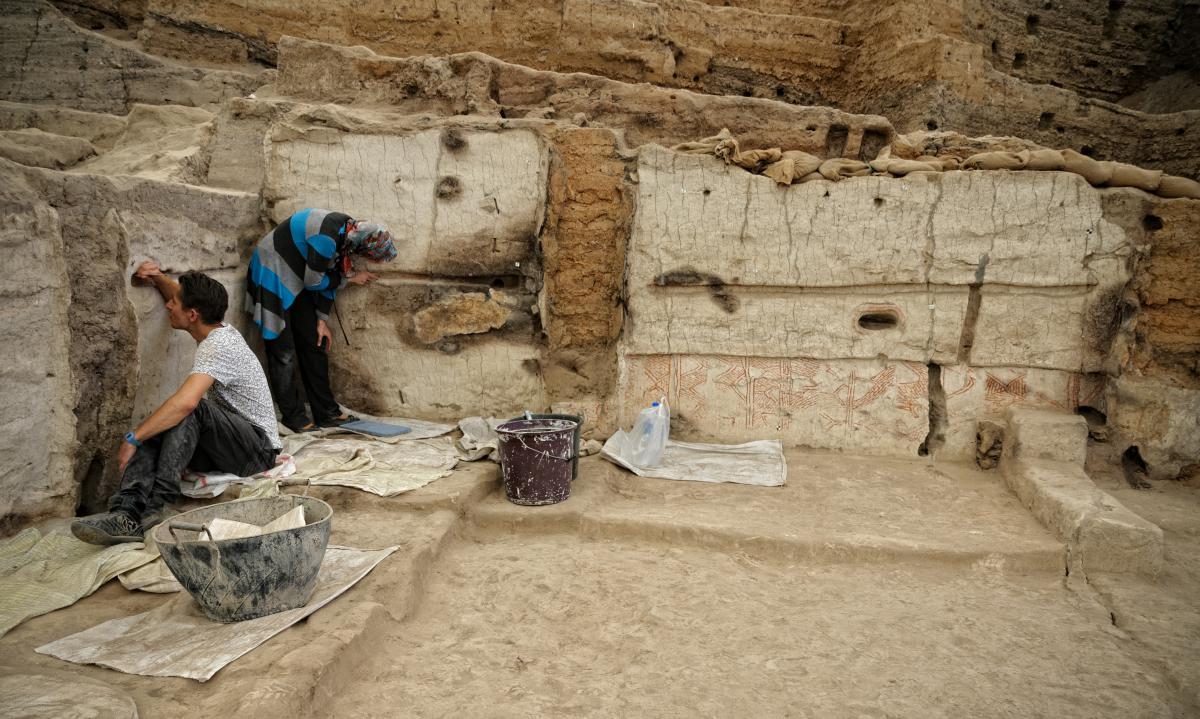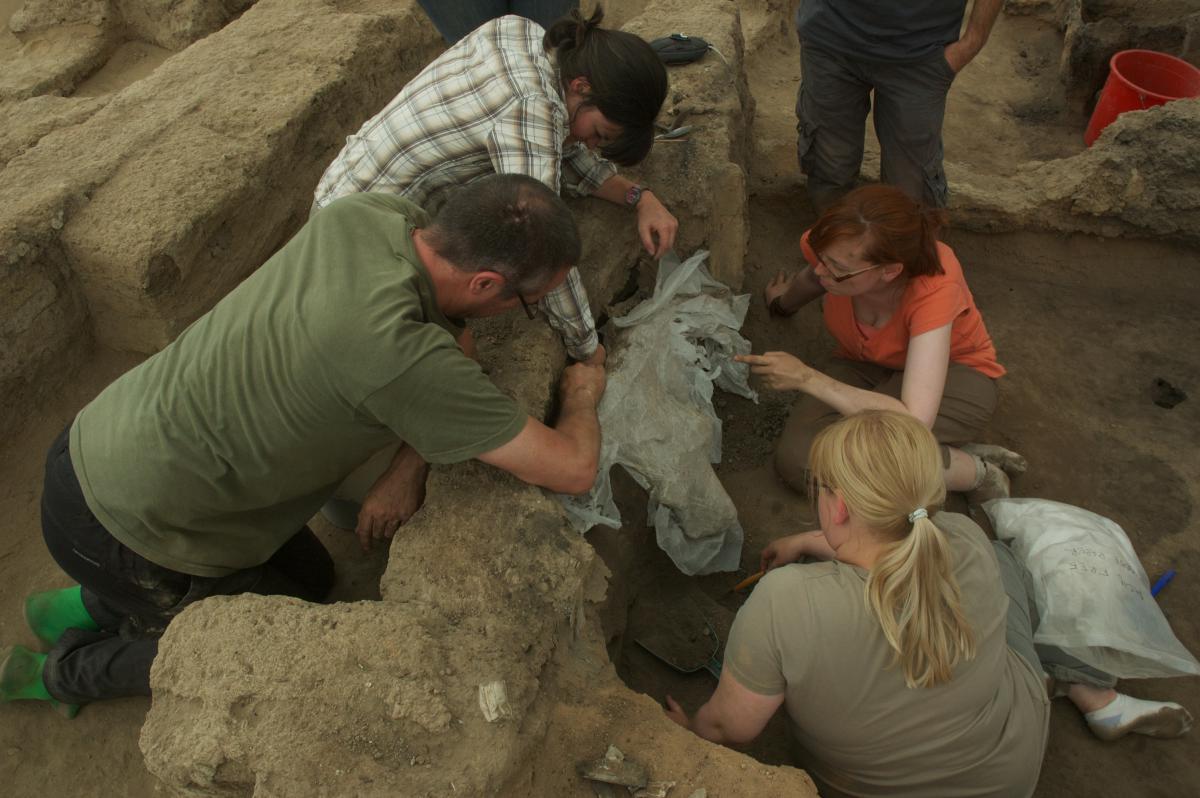
Article by Katrina Gargett
It has always occurred to me that conservation must be one of the most daunting and challenging aspects of excavating a site. This is particularly true when the site is internationally recognised through UNESCO World Heritage inscription, where so many parties have an interest in its protection and management. So when I had the chance to work at Ҫatalhöyük during the 2015 field season I knew I wanted to discover more about the challenges of conservation. With this in mind I drafted some rough questions, and sat down with Ashley Lingle, Head of Conservation, to see what I could find out about the type of work she and her team do.
What struck me most from our conversation was the amount of work the conservation team undertake on site each year, and the sheer number of responsibilities they have. This ranges from site maintenance - making sure the site is clean so visitors can visually understand the archaeology - to the delicate nature of small finds conservation, often involving the reconstruction of finds to ensure they are in a stable enough condition for study. All of these aspects of work have their own challenges, changing from year to year. Most interesting to me is the work the team do in the trenches during the excavation season. When a particularly fragile find is uncovered, such as a wall painting or faunal remains, the team are called out to recover the find. This requires careful judgement and negotiation with other analytical labs in order to decide on the best approach and methods to use for removal.
Wall paintings in particular seem to present a difficult challenge and can, according to Ashley, be quite laborious depending on the layers of plaster and pigment. Yet she also tells me that they can be cathartic. By working to preserve a 9000 year old painting, and seeing the brushstrokes made by Neolithic hands, I can see how that can be the case. Indeed, Ashley goes on to tell me about her particular attachment to the wall painting in Building 80 which took three seasons, and many voluntary hours of work, to finish. It is this sheer dedication and passion of the specialists and archaeologists at Ҫatalhöyük that I’ve found most inspiring. Not just the Conservation Team, but all of the teams on site, are willing to work past scheduled hours for the benefit of the site.

It is this teamwork and commitment which Ashley finds most special about Ҫatalhöyük. As she points out, it is the close proximity of a range of specialist labs in one place which makes the site so unique, as it allows for the opportunity to collaborate and build interpretations together. She has found that this set up enables easier communication with the wider site community on the importance of conservation. By promoting an awareness of how to move around the site, she is making sure that the impact on the site’s integrity remains minimal.
There is no doubt that Ҫatalhöyük is a special site in the way that it is run, and with Ashley and the Conservation Team doing the amazing work they do, Ҫatalhöyük will undoubtedly inspire for many years to come.





